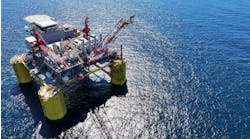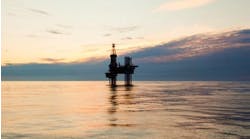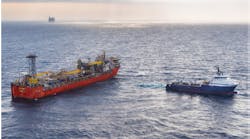Offshore staff
LONDON – Gas production from fields in Indonesia supplying LNG plants looks set to decline through 2030, according to analyst GlobalData.
However, gas supply may also pick up from 2026 if two planned mega-natural gas and LNG projects – Gendalo-Gehem and Abadi – go forward.
According to Cao Chai, oil and gas analyst at GlobalData, construction is progressing on the BP-operated offshore Tangguh expansion program, which will add a liquefaction unit of 3.8 MM metric ton/yr (4.19 MM t/yr) production capacity to the existing Tangguh LNG plant, lifting total capacity up by 50% to 11.4 MM metric tons/yr (12.57 MMt/yr).
“For Badak LNG, a pickup of the feed gas supply will be observed in 2021 after the Merakes field comes onstream,” Chai said, adding that Gendalo-Gehem, the second phase of the Chevron-operated Indonesia deepwater development, could also add significant new supply to the plant.
But it looks like that project will not come onstream until 2025 at the earliest; due in part to continued discussions regarding the share of production between Chevron and SKK Migas.
The new development plan for the offshore Abadi gas field was finally approved in 2019, but operator INPEX and partner Shell still face challenges due to the remoteness of the planned onshore Abadi LNG facility and the layout of the infrastructure.
However, INPEX has expressed confidence in the project economics and is aiming for a final investment decision in the early 2020s which should lead to first gas by 2028.
Chai added: “Indonesia’s LNG export fell to approximately 13.4 MM metric tons/yr (14.78 MMt) in 2018 from 23.6 MM metric tons/yr (26 MMt) in 2010, due to growing domestic demand and expiring contracts with overseas buyers.
“Unlocking gas reserves in the eastern regions will be crucial to both continuing exports and supplying the domestic market, though low global LNG prices pose an additional challenge.”
02/24/2020



